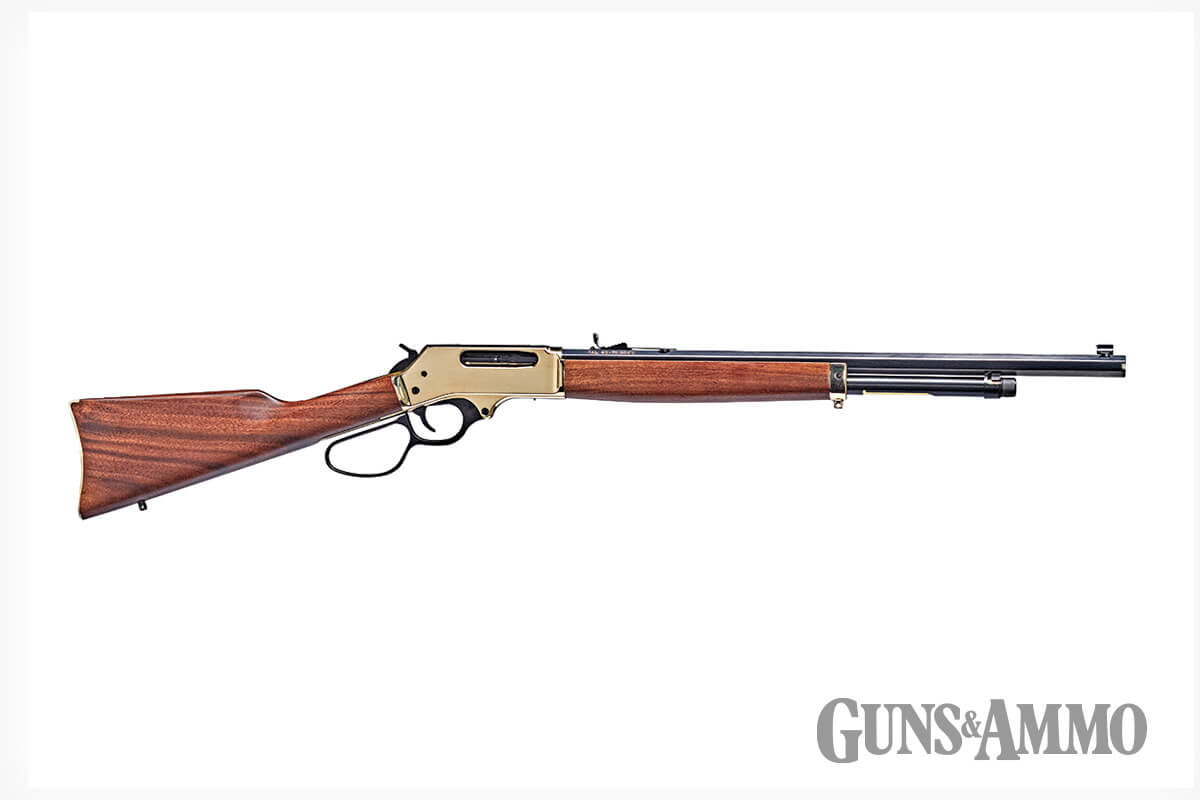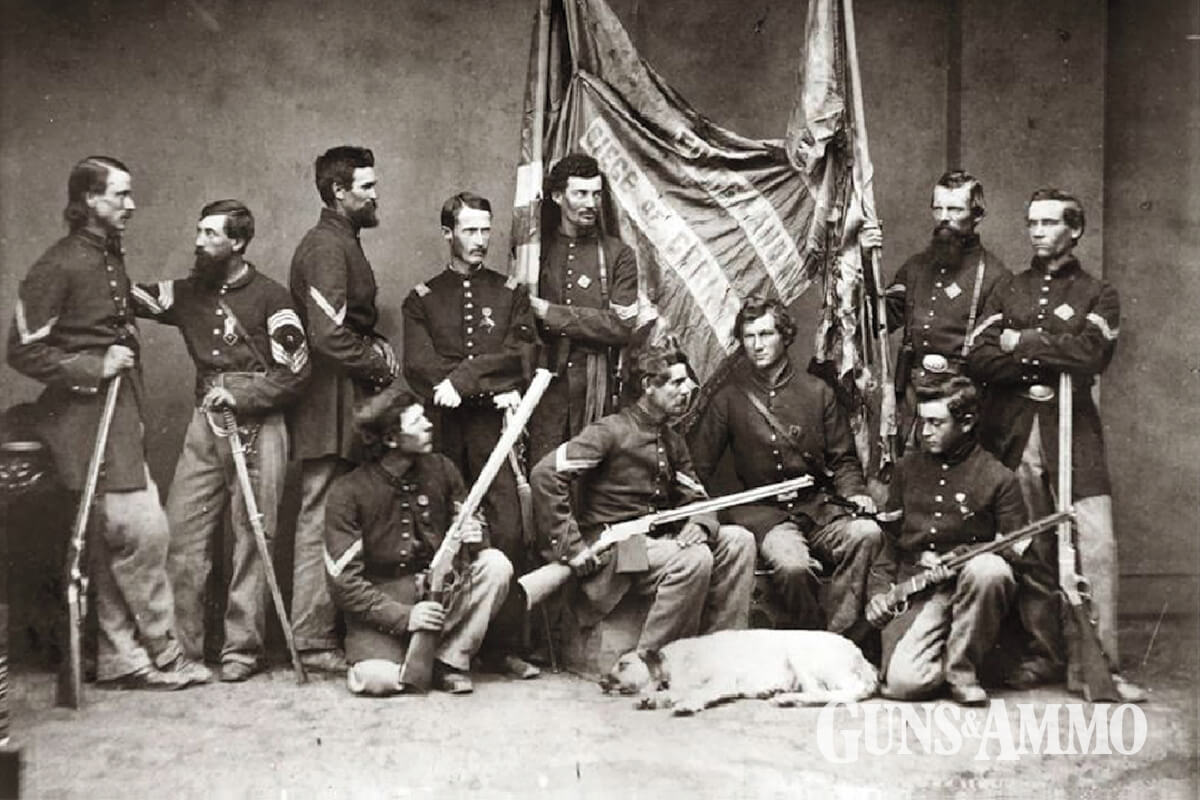Uncategorised
Henry Repeating Arms: 25 Years of American-Made
Henry Repeating Arms celebrated 25 years of business this year, here’s how they’ve made it this far.

Some may remember the Colt Black Powder Arms Company. In 1993, Anthony Imperato took out a home-equity loan, leased a small factory space, acquired the necessary machinery and hired a few employees. In Brooklyn, New York, they assembled and sold 19th-century-style Colt revolvers and muskets under license from Colt’s Manufacturing. Then, in 1996, with the help of his father Louis Imperato, they developed a rimfire lever-action rifle. The first Henry Repeating Arms Model H001 in .22 LR was shipped during March 1997. The lineup quickly expanded to include centerfire designs with the H006 Big Boy in 2003. Henry’s firearms are now produced at three factories, one in New Jersey and two in Wisconsin. Even after 25 years, the H001 remains the best-selling model from Henry’s extensive catalog of more than 200 different rifles and shotguns.
Benjamin Tyler Henry is the historical figure that inspired the Henry Repeating Arms brand. The “Henry” name was revived when the trademark was secured in 1996. Though Louis passed away in November 2007, Henry Repeating Arms lives on with his son, Anthony, as CEO.
Henry Repeating Arms is not affiliated with Benjamin Tyler Henry, or to the New Haven Arms Company that sold the original Henry rifle from 1862 to 1864. Still, Henry’s is a history worth remembering.
The Legend
The lever-action rifle was created from the cumulative efforts of many years and designs from different individuals. Walter Hunt — inventor of the fountain pen, safety pin and sewing machine — designed the .54-caliber “Volitional Repeater” and applied for its patent on September 17, 1847. It was intriguing for its 12-round, under-barrel magazine. (The prototype is on display at the Cody Firearms Museum.) Hunt’s Volitional Rifle proved difficult to manufacture, so Lewis Jennings was hired by George Arrowsmith of New York City to adapt Hunt’s magazine to the improved Jennings Repeating Rifle, which was later made at the Robbins & Lawrence Company in Vermont. Coincidently, perhaps, Benjamin Tyler Henry’s gunsmith apprenticeship led him to the position of shop foreman for Robbins & Lawrence, where he also met Horace Smith and Daniel Wesson.
Smith was hired by Courtland Palmer to oversee the work and improve the Jennings Repeating Rifle, but to commercialize production quicker, the effort devolved to a single-shot breechloader and the tubular magazine was discarded from the design. Few repeaters were ever made. After several failed foreign trials and redesigns, Smith continued refining the effort to the point that he received a patent for the Smith-Jennings Repeater in August 1851. The Smith-Jennings Repeater reverted to a single ring-lever-actuated design, which was somewhat similar to Hunt’s original lockwork. The rifle also used Hunt’s “rocket ball” self-contained ammunition concept and featured a 12-round magazine capacity. However, necessary alterations continued to alleviate feeding problems. The in-line changes resulted in three variations during this period of production.
In 1854, Smith and Wesson formed their own company to develop a lever-action pistol and the Volcanic cartridge. In 1855, Oliver Winchester joined them as an investor and managed to obtain the rights for the Volcanic designs and ammunition. Hence, the Volcanic Repeating Arms Company was formed. Winchester assumed ownership in 1856 and moved production to New Haven, Connecticut. He renamed the business New Haven Arms Company in 1857 and hired Henry as the plant superintendent.
On October 16, 1860, a patent for the .44-caliber, 16-shot repeating rifle was awarded to Henry. By the end of 1860, some 270 rifles were produced and many have been documented as having been used early in the war. Winchester put it into production by July 1862 and 900 were sold at $41 each in the first 3 months.


Captain James Wilson of the 12th Kentucky Cavalry wrote a letter on February 17, 1863, to describe an attack by seven Rebel soldiers. He used his Henry to kill all seven with eight shots, and added that it would not have been possible with a muzzleloader. On October 1863, Kentucky armed his entire command of 104 with Henry rifles.
The Union Army purchased 1,731 Henry rifles for its cavalry in 1863. However, more than 9,000 were privately purchased by the end of the war. Illinois Governor Richard Yates armed some of the 64th Illinois Infantry with Henry rifles, who became known as “Yates’ Sharpshooters.” The largest privately funded Henry regiment was the 7th Illinois Volunteer Infantry who were armed with more than 500 Henry rifles purchased at $52.50 each. The second largest was the 66th Illinois Volunteer Infantry who purchased more than 220 rifles. This equated to almost 4 months pay.
Advertisement
On October 4, 1864, a Confederate division of 3,276 men led by Major General Samuel French marched north to Big Shanty to overwhelm the Federal Garrison of 976 troops defending the railroad cut at Allatoona. French’s troops surrounded the area on arrival and attacked on the morning of October 5. However, unknown to French, 2,025 Federal reinforcements led by General John Corse arrived hours before hostilities on a train from Rome, Georgia. Hours of fighting commenced and the Federal positions were nearly captured. However, among the reinforcements was a 52-man company of the 7th Illinois Volunteers, many armed with Henry rifles. Though suffering high casualties, these men were credited in part with stopping the attack.
“When the artillery reopened, this company of 16 shooters [with Henry rifles] sprang to the parapet and poured out such a multiplied, rapid, and deadly fire that no man could stay in front of it, and no serious effort was thereafter made to take the fort by assault,” said Major William Ludlow, a Union officer present at Allatoona.

An unknown Confederate officer from the Battle of Allatoona Pass was also quoted, “It’s a rifle that you could load on Sunday and shoot all week long.”
In 1864, Henry became frustrated with working for Winchester and alleged that he was inadequately compensated. While Winchester was traveling in Europe, Henry attempted to seize ownership of New Haven Arms through the state legislature. He was unsuccessful and left the company to become a self-employed gunsmith for the remainder of his life. Meanwhile, New Haven Arms was reorganized as Winchester Repeating Arms.
Winchester introduced Nelson King’s improvements to the Henry lever-action and announced its new rifle in 1866. Until the introduction of the Model 1873, the Model 1866 was simply known as “The Winchester.” It notably added a wood forend to protect an enclosed tubular magazine, and a loading gate through the right side of the receiver. Like the 1860 Henry, the 1866 Winchester was recognizable by its brass receiver. This first Winchester rifle was manufactured and sold until 1899, a year after Henry’s death.
Henry Repeating Arms
Introduced in 2013, the New Original Henry demonstrated that Henry knows how to honor its namesake; it’s an authentic tribute to American ingenuitiy and to the soldiers who fought with the legendary rifle during the Civil War. However, Benjamin Tyler Henry’s spirit of innovation is also evident throughout Henry’s extensive catalog of lever-action and single-shot rifles and shotguns.
Henry Repeating Arms manufactures an array of firearms in both rimfire and centerfire calibers, and in a variety of finishes. In addition to guns suited for hunting, home defense and cowboy action shooting, Henry also supports philanthropy through the raising of funds and donations to youth shooting causes, conservation, law enforcement, military, Second Amendment organizations and children’s hospitals. Now with more than 550 employees, Henry Repeating Arms remains committed in preserving the brand’s legacy as it celebrates its 25th anniversary.
